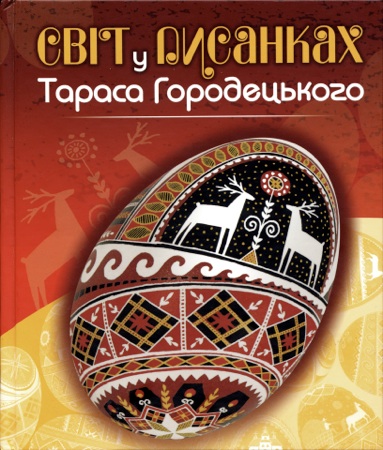
Світ у Писанках Тараса Городецького
The World in the Pysanky of Taras Horodetsky
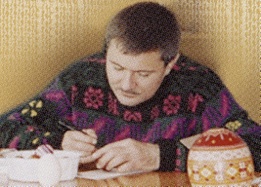
Editor: Віра Манько
Edition: 1st
Format: Small hardcover
Pages: 128
Language: Ukrainian
Illustrations: Numerous color plates
Publisher: Svichado (Lviv, 2009)
Availability: Yevshan, Svichado
Acquired: from author
ISBN: 978-966-395-274-1
This small book (it measures 7 by 8 inches) is a tribute to one of the finest pysankary every, Taras Horodetsky, who died recently at the age of 42. Many of us have seen his work–his pysanky were sold throughout Europe and North America. They are gorgeous works of art, beautifully intricate yet not overly busy, containing the unity of theme and a soulfulness that is not often seen outside of traditional pysanky.
This book was conceived of by his friend, Vira Manko. She put countless hours into it, finding his scattered pysanky, having them photographed, and laying out and publishing this book, which is a masterpiece of the polygraphist's art. The text is minimal: Vira has written a foreword, Taras’ friends have contributed their remembrances of him, and there are also a few letters from Taras, in which he speaks of his art and his techniques, and particularly his exploration of traditional dyeing techniques. Mostly, though, he speaks to us through his work.
And what incredible work it is. Taras’ pysanky are the most gorgeous you’ll probably ever see, whether centuries old traditional patterns he’s recreated, or modern compositions of his own design. There are so many, and they are so gorgeous, that it is hard to select just a few to show here.
Unfortunately, no English version of this book is available, and there are no plans to publish one. The links below are to my translations of 1) the introduction/biography 2) Taras’s letters about natural dye techniques and 3) the captions. (The captions of the photos describe the pysanky pictured, and give information as to the type of egg used, the technique and the type of dye.)
Taras first came to my attention through the pysanky he contributed to Vira’s book “The Ukrainian Folk Pysanka.” Some of those pysanky are shown in this book. He recreates Hutsul pysanky, as seen on this page of traditional designs from Chorny Potik (Чорний Потік).
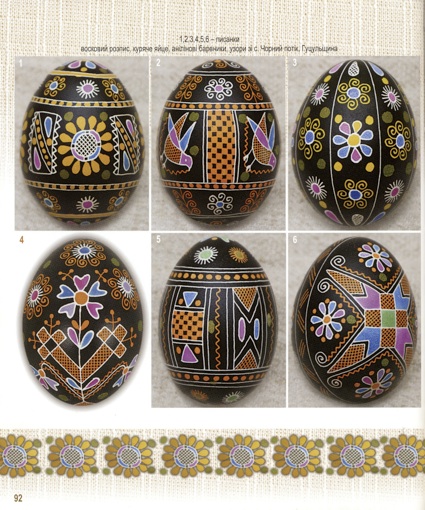
The influence of Hutsul design is evident in his original works, with their intricacy and their motifs, particularly horses and deer, which he uses over and over in his compositions (see below).
Taras wrote gorgeous Sokal-styled pysanky, with their free-form floral motifs and stylized flowers:
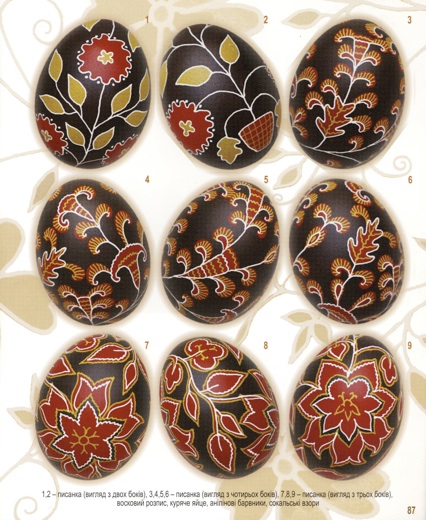
Chervonohrad, Taras’ home, is in the Sokal region, so it is not surprising that he has become a master of this traditional and uniquely local form.
Taras also creates exquisite drop-pull pysanky in the Lemko style. Seemingly quite simple, these pysanky are much more difficult than they appear:
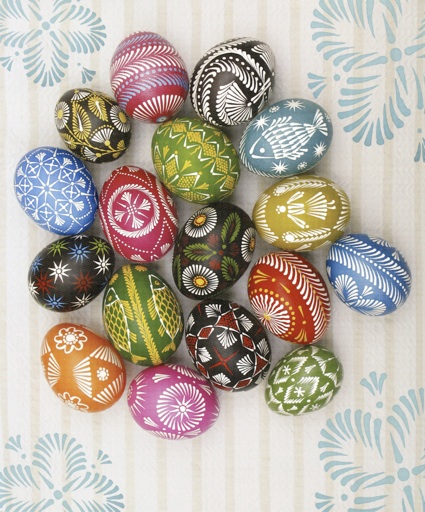
Besides working with traditional designs, Taras also had begun experimenting with traditional botanical dyes. He writes about this in letters to friends, telling which plants he has been using, how he has been experimenting with mordants (various alums), and of the properties of the dyes–longer dyeing times, more subtle colors. The colors he obtained were earth tones, and produced lovely, muted pysanky:
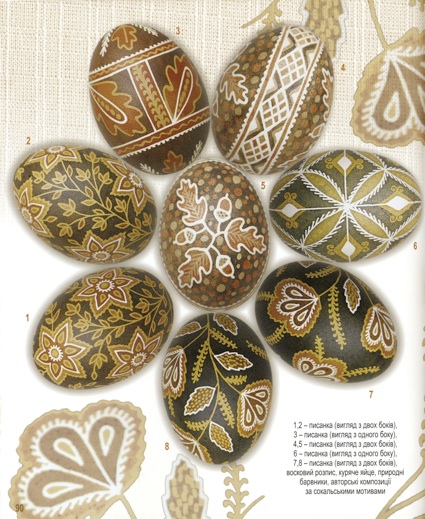
The colors in the page above are all natural, using local plants, and the designs are his own, but incorporate local Sokal motifs. He tried out these dyes with various styles and methods–modern designs, etched pysanky and drop pull pysanky, numerous examples of which can be found in this book.
Another aspect of pysankarstvo with which Taras was experimenting was acid etching. It was not a new technique–pysanky had been soaked in sauerkraut juice and other acidic media in the past to bleach them andmildly etch them in the process. Taras expanded its possibilities, using stronger acids and makingetching the main process he was interested in. He made beautifully intricate pysanky like the ones below with his techniques:
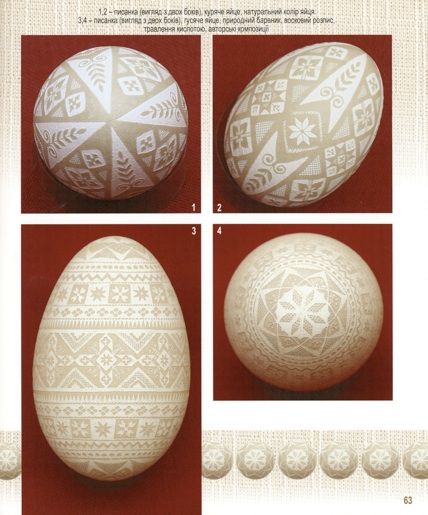
The top pysanka was a brown chicken egg which was acid-etched; the bottom one was etched, and the etched areas dyed with a natural dye.
But despite all this, what Taras was mainly known for were his glorious, multicolored, intricately detailed, original pysanky. He relied on traditional designs and motifs, but with such virtuosity as has not been seen before. Most typical were his horses, lovely, stylized creatures with flowing manes:
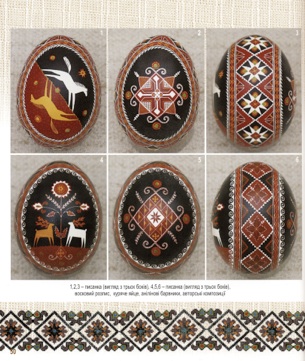
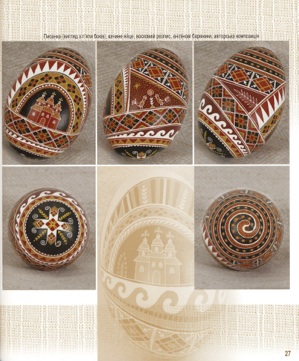
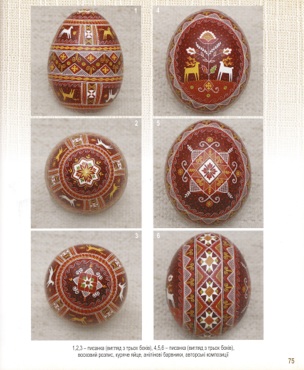
You really need to see the life-sized photos (243 of them, per an eBay seller’s count) in the book to do these pysanky justice. While much of his original work was like the pysanky above, with some he experimented more, either with color (the black and white eggs below) or rearrangement (the “quilt” egg below):
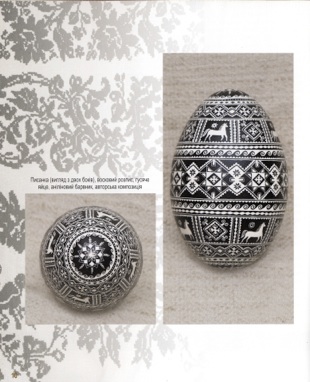
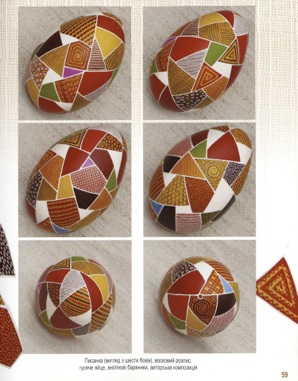
This book is a gem, and belongs in the library of anyone who truly appreciates the beauty of a well-written pysanka.
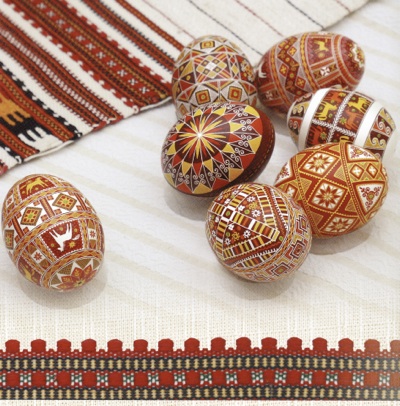
Back to MAIN Писанка Books home page.
Back to MAIN Books home page.
Back to Pysanka Bibliography.
Search my site with Google
